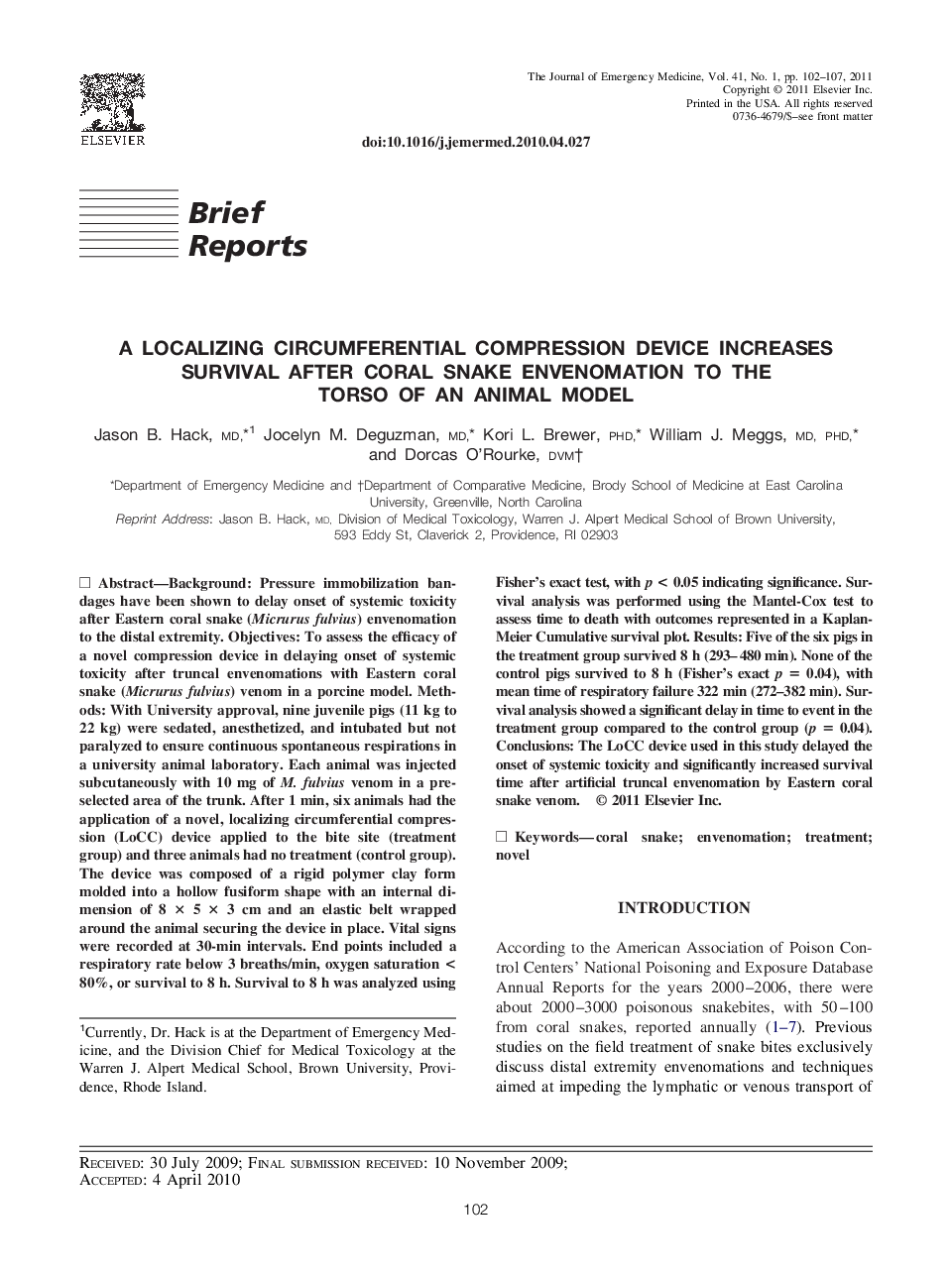| Article ID | Journal | Published Year | Pages | File Type |
|---|---|---|---|---|
| 3247754 | The Journal of Emergency Medicine | 2011 | 6 Pages |
Background: Pressure immobilization bandages have been shown to delay onset of systemic toxicity after Eastern coral snake (Micrurus fulvius) envenomation to the distal extremity. Objectives: To assess the efficacy of a novel compression device in delaying onset of systemic toxicity after truncal envenomations with Eastern coral snake (Micrurus fulvius) venom in a porcine model. Methods: With University approval, nine juvenile pigs (11 kg to 22 kg) were sedated, anesthetized, and intubated but not paralyzed to ensure continuous spontaneous respirations in a university animal laboratory. Each animal was injected subcutaneously with 10 mg of M. fulvius venom in a pre-selected area of the trunk. After 1 min, six animals had the application of a novel, localizing circumferential compression (LoCC) device applied to the bite site (treatment group) and three animals had no treatment (control group). The device was composed of a rigid polymer clay form molded into a hollow fusiform shape with an internal dimension of 8 × 5 × 3 cm and an elastic belt wrapped around the animal securing the device in place. Vital signs were recorded at 30-min intervals. End points included a respiratory rate below 3 breaths/min, oxygen saturation < 80%, or survival to 8 h. Survival to 8 h was analyzed using Fisher's exact test, with p < 0.05 indicating significance. Survival analysis was performed using the Mantel-Cox test to assess time to death with outcomes represented in a Kaplan-Meier Cumulative survival plot. Results: Five of the six pigs in the treatment group survived 8 h (293–480 min). None of the control pigs survived to 8 h (Fisher's exact p = 0.04), with mean time of respiratory failure 322 min (272–382 min). Survival analysis showed a significant delay in time to event in the treatment group compared to the control group (p = 0.04). Conclusions: The LoCC device used in this study delayed the onset of systemic toxicity and significantly increased survival time after artificial truncal envenomation by Eastern coral snake venom.
